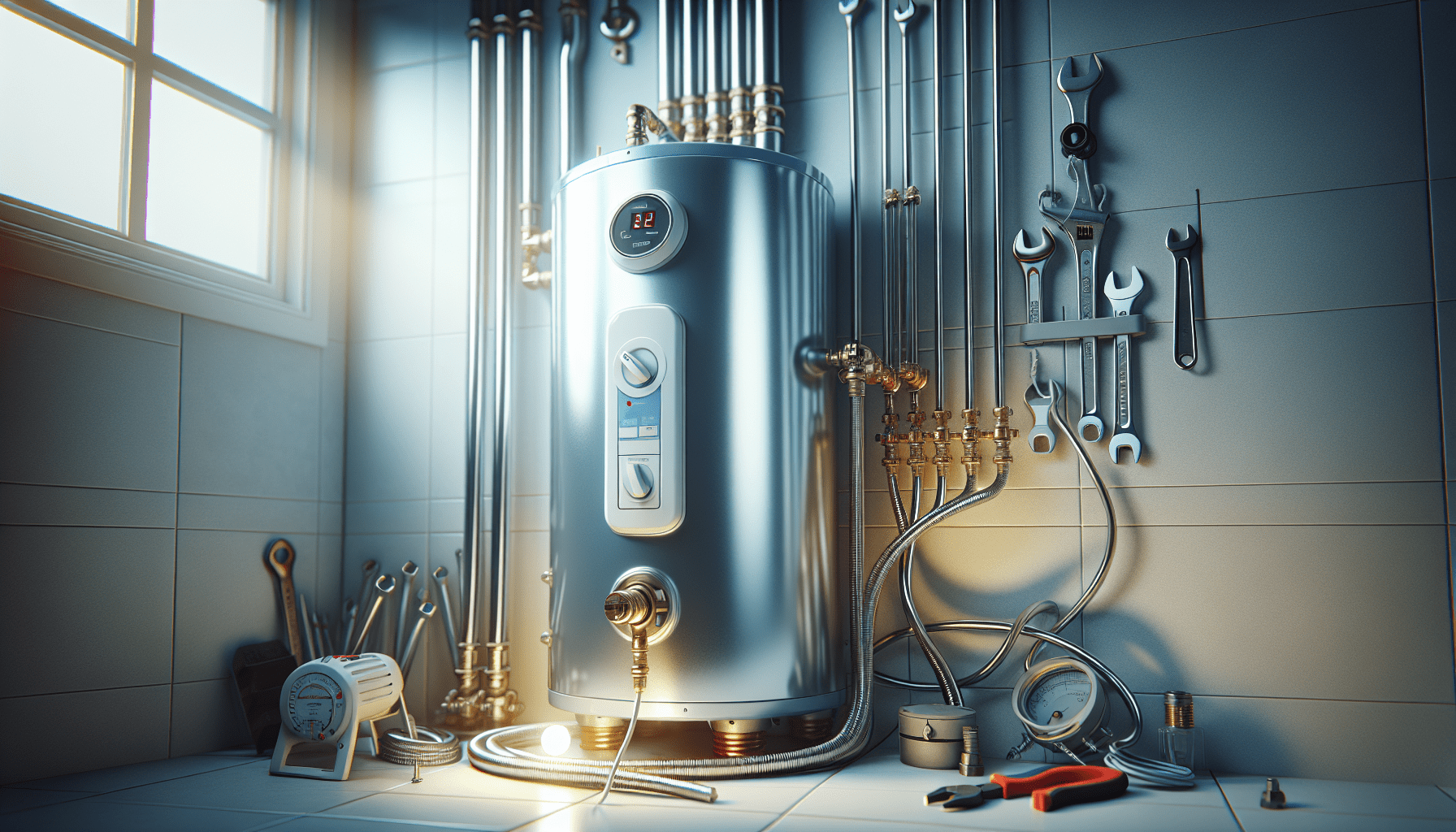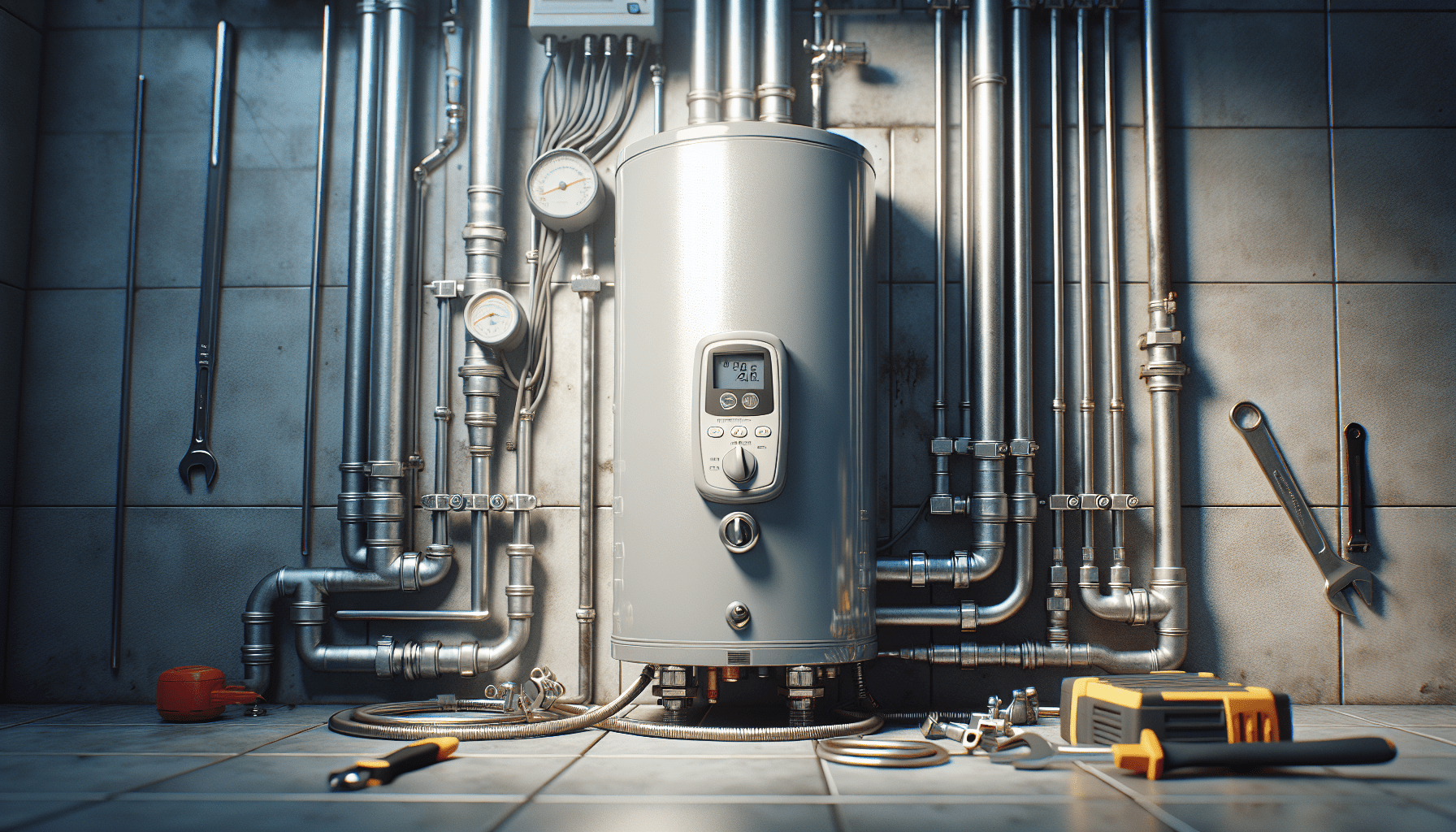Have you ever thought about how much you rely on your electric water heater? It’s a true unsung hero of your home, providing you with hot showers, warm baths, and clean dishes. But, like any other appliance, it needs a little TLC to keep running smoothly. Let’s embark on a journey to understand the maintenance schedule for your electric water heater, ensuring it serves you well for years to come.

Why Maintenance Matters
You might be wondering, “Why should I care about maintenance?” Well, taking care of your electric water heater is critical for a few reasons. First, regular maintenance helps your water heater run efficiently, meaning lower utility bills for you. Second, it can extend the lifespan of your unit, saving you the hassle of unexpected repairs or replacements. And finally, a well-maintained water heater is less likely to develop leaks or other issues that could lead to water damage in your home. Sounds good, right?
Understanding Your Electric Water Heater
Before getting into the nitty-gritty of maintenance, it helps to understand how your electric water heater operates. Typically, these appliances store a substantial amount of water and heat it using electric heating elements. The temperature is controlled by a thermostat, which kicks in when the water cools down. Familiarizing yourself with its components will make maintenance a bit more straightforward.
Key Components to Know
-
Heating Elements: These are typically located at the bottom and top of the tank, heating the water inside.
-
Thermostat: The device that controls the water temperature, usually set between 120°F to 140°F for optimal performance.
-
Tank: The vessel that holds the heated water; understanding its capacity can help you gauge your hot water needs.
-
Pressure Relief Valve: This safety feature releases excess pressure if it builds up inside the tank.
Knowing these parts will come in handy as we break down your maintenance schedule!

Routine Maintenance Tasks
A well-rounded maintenance schedule can mostly be summed up in a few straightforward tasks. Let’s list them out for quick reference!
| Task | Frequency | Purpose |
|---|---|---|
| Inspect Pressure Relief Valve | Annually | Prevents overpressure from damaging the tank. |
| Flush the Tank | Annually | removes sediment buildup that affects efficiency. |
| Check the Anode Rod | Every 2-3 Years | Extends the life of the tank by preventing rust. |
| Test the Thermostat | Annually | Ensures proper water temperature management. |
| Inspect for Leaks | Monthly | Spot potential problems before they escalate. |
Inspecting the Pressure Relief Valve
This often-overlooked component is crucial for safety. To test it, lift the lever on the valve to let some water out – if it doesn’t flow or leaks constantly, it may need replacement. This task is best done during your annual maintenance check.
Flushing the Tank
Sediment buildup can be the bane of your electric water heater’s existence. Flushing the tank once a year helps prevent this issue. To do this, turn off the power to the heater, attach a hose to the drain valve, and let the water flow into a bucket or drain. This will help in removing any silt or minerals that may have settled.
Checking the Anode Rod
The anode rod attracts corrosive elements present in the water, sacrificing itself in the process. Every few years, check this rod: if it’s heavily corroded, replacing it can extend the lifespan of your tank.
Testing the Thermostat
To ensure consistent heating, test the thermostat at least once a year. Simply turn the temperature dial to check if the water heats appropriately. Adjust it to within the recommended range for optimal performance.
Inspecting for Leaks
Perform a monthly inspection for leaks around your water heater. Look for damp spots on the floor or signs of rust or corrosion. Early detection can save you significant repair costs down the line.
Seasonal Maintenance Tips
Apart from routine checks, giving your water heater a little extra attention with the changing seasons can go a long way. Here’s how!
Winter Prep
When those frigid months roll in, your heater may have to work overtime. Here’s how to prepare:
- Insulate the Heater: Consider wrapping your heater in an insulation blanket to help retain heat.
- Inspect Pipes: Check your hot water pipes for insulation to prevent freezing and bursting.
Summer Maintenance
During the warmer months, hot water usage may decline, making it an excellent time for in-depth checks:
- Turn Down the Temperature: If you’re not using hot water as much, lower the thermostat setting to save energy.
- Check for Leaks: Since you might not use your hot water as frequently in summer, take this time to inspect the surrounding area for signs of leaks.
Troubleshooting Common Issues
Sometimes, despite your best maintenance efforts, problems can still arise. Familiarizing yourself with common issues can help you tackle them head-on.
No Hot Water?
If you go to take a soothing shower only to find cold water, consider the following:
- Check the Circuit Breaker: Sometimes, it’s as simple as flipping a switch back on.
- Inspect the Heating Elements: A malfunctioning heating element might be the culprit. This requires a bit more investigation, and you may need to contact a professional if you’re not comfortable.
Strange Noises
Hearing popping or rumbling sounds? This could indicate sediment buildup in the tank. Flushing the tank during your scheduled maintenance should help alleviate this problem.
Discolored Water
If your hot water comes out brown or rusty, it may signal rusting within the tank or anode rod. This is a sign that you’ll want to check your anode rod and possibly replace it.
Knowing When to Call a Professional
While routine maintenance may be within your skill set, some situations call for a professional’s touch. Here are a few indicators:
-
Persistent Leaks: If you notice significant water accumulation or can’t find where the leak is coming from, it’s time to call in a professional.
-
Strange or Strong Odors: If your hot water smells rotten or pungent, there could be a bacterial issue that needs immediate attention.
-
Age of the Water Heater: Learn how old your heater is. Most electric water heaters last about 10-15 years; if yours is nearing that mark, it may be time to seriously consider replacement.
Keeping Track of Your Maintenance
Record-keeping is not just for accountants! Keeping a maintenance log helps track what’s been done, when it was completed, and when the next task is due.
-
Create a Maintenance Calendar: Setting reminders on your phone or using a calendar app can help you stay on schedule.
-
Log Each Task: After you complete a maintenance task, jot down what you did and the date, creating a history of your water heater’s upkeep.
By maintaining a meticulous record, you’ll have a clearer picture of your electric water heater’s health and make informed decisions for future maintenance or replacement.
Conclusion
Taking care of your electric water heater doesn’t have to be overwhelming. With these simple tasks, you can ensure your appliance runs efficiently and reliably for years to come. Remember to check the pressure relief valve annually, flush the tank, and keep an eye on the anode rod. Regular maintenance isn’t just about preventing issues; it’s also about extending the lifespan of your water heater while ensuring that your home remains a cozy haven. With just a bit of effort and attention, you can enjoy the comfort of hot water anytime you need it. Here’s to many warm showers ahead!

